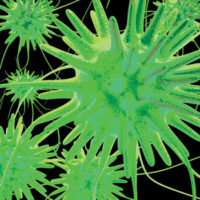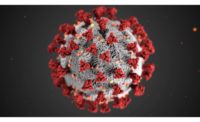For as long as I can remember, allergens in retail food have always been something of an enigma. Unlike foodborne infections that strike without warning, folks who have food allergies (or food intolerance) generally know of them and avoid the offending comestibles. Most individuals who have ever suffered from atopic syndrome are careful with what they eat and are quite vigilant in scrutinizing labels and asking questions.
Personally, while I do not have a food allergy, I have food intolerance to lactose and avoid foods made with unfermented milk products, such as oyster stew, New England clam chowder, custard cream pie, certain cheeses and ice cream…to mention just a few. My selection, albeit limited, still lets me enjoy a good repast without incident, but I always inquire about cream sauces and such. This puts the prevention of bobbity belly and colon cough squarely as my own responsibility… along with most of the 12 million other fellow sufferers.
Only two times in my four decades as a sanitarian have I had to deal with a serious foodborne allergic reaction that resulted from dining at a retail food establishment. Both times, the patron suffered a severe reaction that required immediate medical attention. The operators were unaware of food allergens, allergic reactions, or prevention of such an incident. And, in both cases, the offending foods contained proteins derived from one of the eight foods that account for 90% of all food-allergic reactions. This is not to say that this infrequency is an indication of the absence of epidemiological evidence. Quite the contrary, an estimated 150 Americans die each year from severe allergic reactions to food. If my statistics are correct, for every death there were anywhere from ten to a hundred individuals who needed an epinephrine injection, and an additional order or two of magnitude who experienced hives or another adverse reaction. These facts point out that the prevalence of food allergies does not fit the ’usual’ epidemiology of foodborne illnesses but does conform to the classical risk model.
In the past, food allergy was not given a high priority in risk-based inspections, such as time, temperature, cross contamination and personal hygiene. At long last, however, the 2005 Food Code targets allergen information, including milk, egg, fish, crustacean shellfish, tree nuts, wheat, peanuts and soybeans, as well as food ingredients that contain protein derived from one of these foods. It suggests, for want of a better phrase, "allergy consciousness" by the operator, kitchen and wait staffs.
While this is all very well and good, there remains the question of enforcement. However, unlike time and temperature abuse, which is quite objective, compliance with allergy consciousness is a bit more elusive and borders on subjectivity. Field validation is not always easy or straightforward. More often than not, the regulatory community relies solely on the awareness and knowledge of the operator. In fact, the Food Code identifies this risk as a subset of the person-in-charge’s knowledge of HACCP and responses to the inspector’s questions, describing foods identified as major food allergens and the symptoms that can arise if consumed by a sensitive individual. Needless to say, this assessment is rather open-ended and does not really address the problem of gaps in allergen labeling or actual kitchen operations.
There was a classic study conducted between September 1999 and March 2000 in which FDA researchers, working with state inspectors from Wisconsin and Minnesota, inspected 85 small- to medium-sized bakery product, ice cream and candy manufacturers for allergen labeling and cross-contamination issues. They focused primarily on peanut and egg allergens and collected samples for analysis only when labeling or cross-contamination issues were identified. They found 25% of all samples tested positive for peanut allergens, although peanuts were not listed on product labels. This finding was surprising in spite of the fact that the majority of the manufacturers checked their products to ensure that the labels accurately reflected all of the ingredients. In addition, the investigators also found that companies unintentionally introduced food allergens into other foods through either poor cleaning and cooking schedules or improper cleaning of utensils. Therefore, enforcement validation needs to go beyond simple questioning of the qualified food operator.
Taking this a few steps further, the National Restaurant Association published a Food Allergy Training Guide developed by the Food Allergy & Anaphylaxis Network in coordination with the National Restaurant Association’s Health & Safety Regulatory Affairs Department. In it, customer service, preparation and emergency procedures are detailed in plain language. In addition to the recommendations in the Training Guide, there are several suggested policies and procedures that can be implemented which are relatively easy to review during an inspection. These measures address the prevention of allergen contamination and cross-contamination with equipment use and design. For instance:
• Dedicating separate equipment, lines, rooms or facilities for allergen-containing product.
• If possible, color-code areas, equipment, containers and/or utensils for allergen use.
• Include any utensils and equipment tools in allergen-prevention planning.
• Review sanitation protocols by thoroughly cleaning all equipment. Emphasize the hard-to-clean areas and look for "hidden" residues. When done, visually inspect the equipment. Create a sanitation procedure check-list if necessary.
• Inspect the preparation area to ensure that it is "allergen clean" and ensure proper storage of clean items.
• Consider the use of ATP monitoring to evaluate cleanliness. Those issues that are a bit more difficult to evaluate, but are nonetheless important include:
• Encouraging awareness of how equipment design affects potential cross-contamination, and
• Encouraging staff to speak up when they see need for changes or improvements in the operation.
Many of the larger chain restaurants have already set the standard in several of these areas. They have done their due diligence and have provided training to their staffs along with a review of recipe ingredients and informing guests of any allergy potential with certain foods. They made a concerted effort to evaluate allergen cross-contamination from preparation to service and even found creative recipes for allergen-free foods. Of these measures, they realize that staff training stands out as the most important preventive measure, particularly in their staff’s ability to describe menu items and ingredients upon request from a patron and in the understanding and implementation of special cleaning efforts.
For those who regularly read this column, I have repeatedly emphasized menu review not only in conducting a plan review but also as a precursor to the actual compliance inspection. Allergen consciousness compliance should include a careful ingredients review, particularly with complex foods such as sauces, dressings and garnishes. One should regularly check food ingredient labels, even though that same food label was reviewed in the past. Because food manufacturers sometimes change ingredients, a product that was judged to be allergen-free may now contain a food ingredient that can cause an allergic reaction.
Finally, the model for ’allergy consciousness’ enforcement has been around for at least six thousand years. It is commonly known as Kashrut: Jewish Dietary Laws. Contrary to popular misconception, rabbis or other religious officials do not bless food to make it kosher. Rather, they examine the foods and how they are processed to assure kosher consumers that the food is indeed kosher and complies with the dietary laws that have their foundation in the Torah. The kosher certification not only extends to the food ingredients, but also to the equipment and utensils in which they are cooked and with which they are served, as well as how everything is cleaned and stored. Kashrut is an exacting law; its process and the approach used in compliance make an excellent teacher and guide for the regulatory community.
Forensic sanitarian Robert W. Powitz, Ph.D., MPH, RS, CFSP, is principal consultant and technical director of Old Saybrook, CT-based R.W. Powitz & Associates, a professional corporation of forensic sanitarians who specialize in environmental and public health litigation support services to law firms, insurance companies, governmental agencies and industry. He served as Director of Biological Safety and Environment for the U.S. Department of Agriculture at the Plum Island Animal Disease Center at Greenport, NY. He is the first to hold the title of Diplomate Laureate in the American Academy of Sanitarians, and also is a Diplomate in the American Academy of Certified Consultants and Experts and with the American Board of Forensic Engineering and Technology.
Dr. Powitz welcomes reader questions and queries for discussion in upcoming columns, and feedback or suggestions for topics you’d like to see covered can be sent to him directly at Powitz@sanitarian.com or through his website at www.sanitarian.com.
"Allergy Consciousness" for the Retail Food Indusrty




